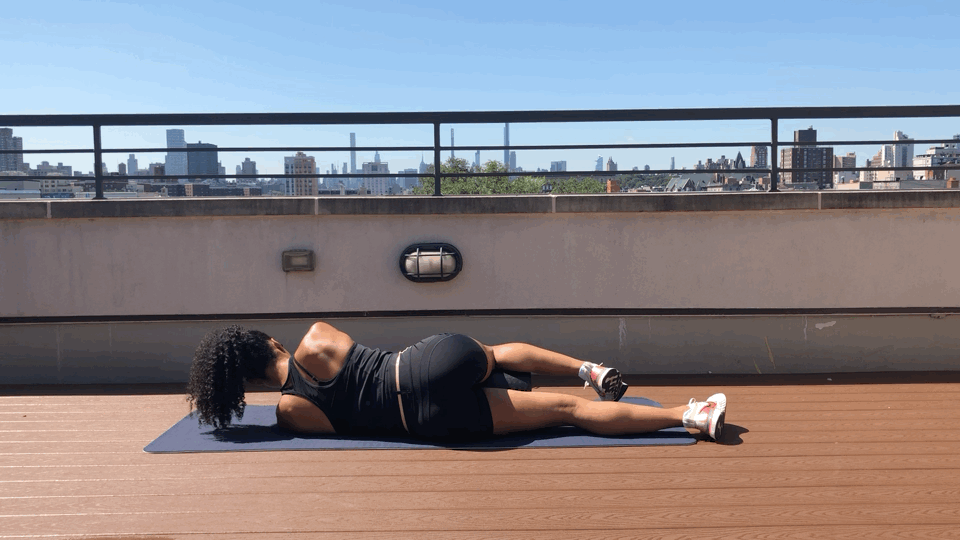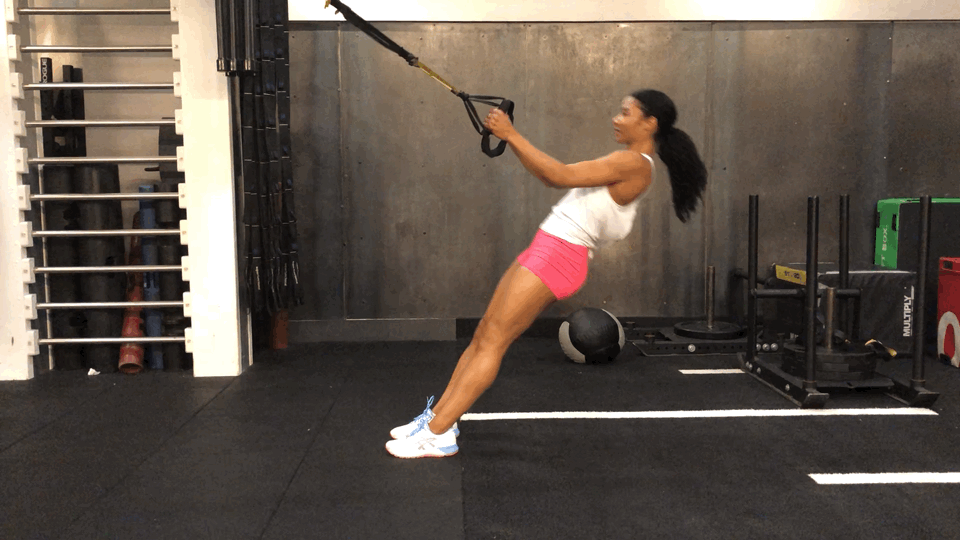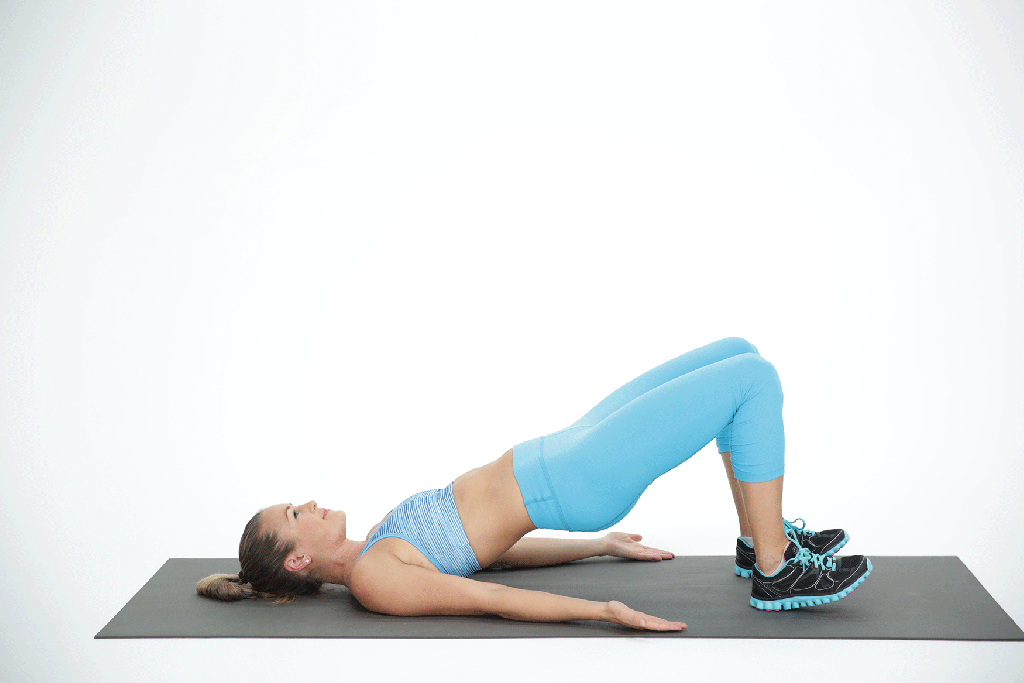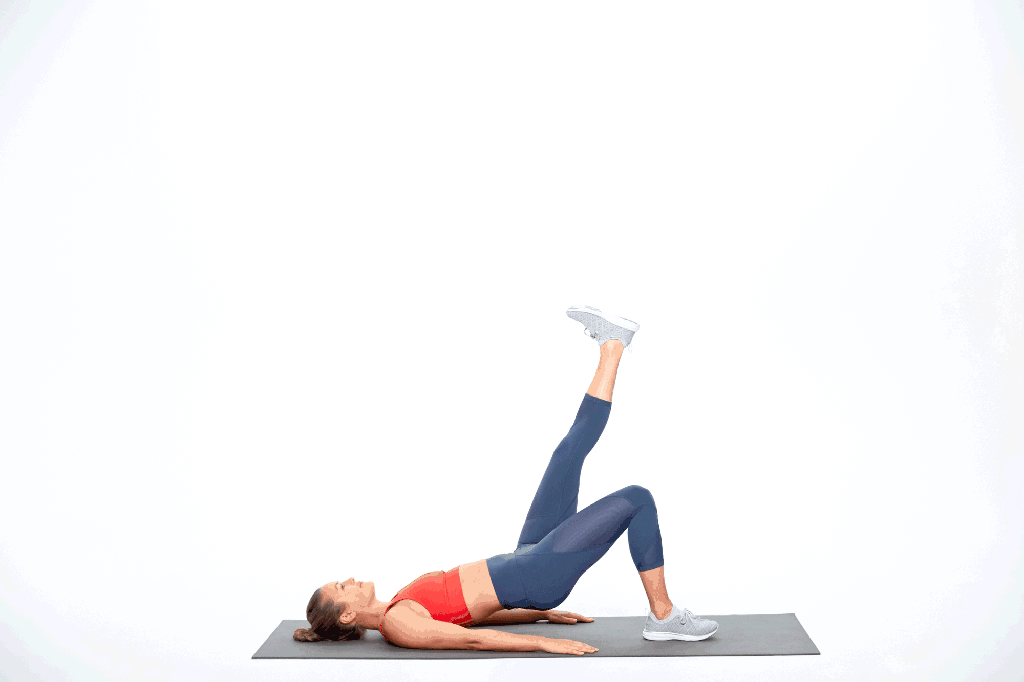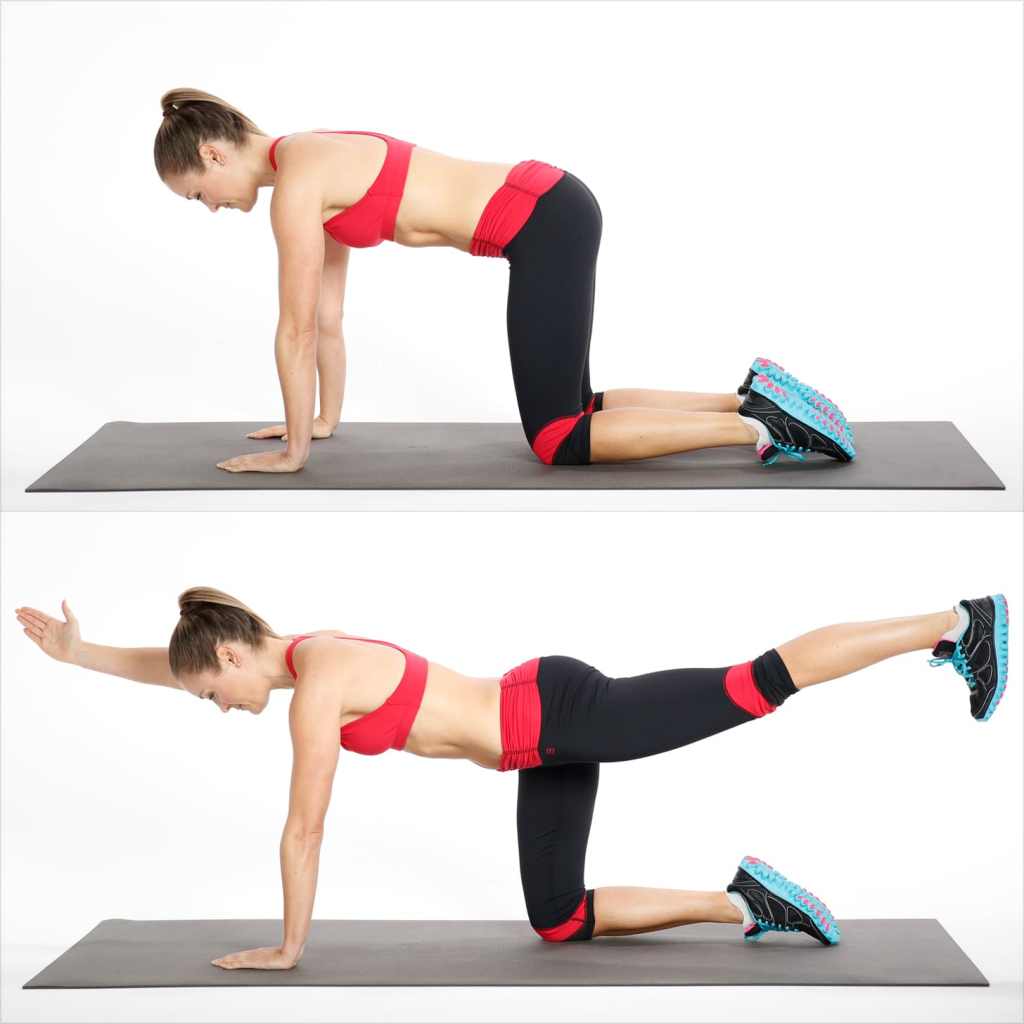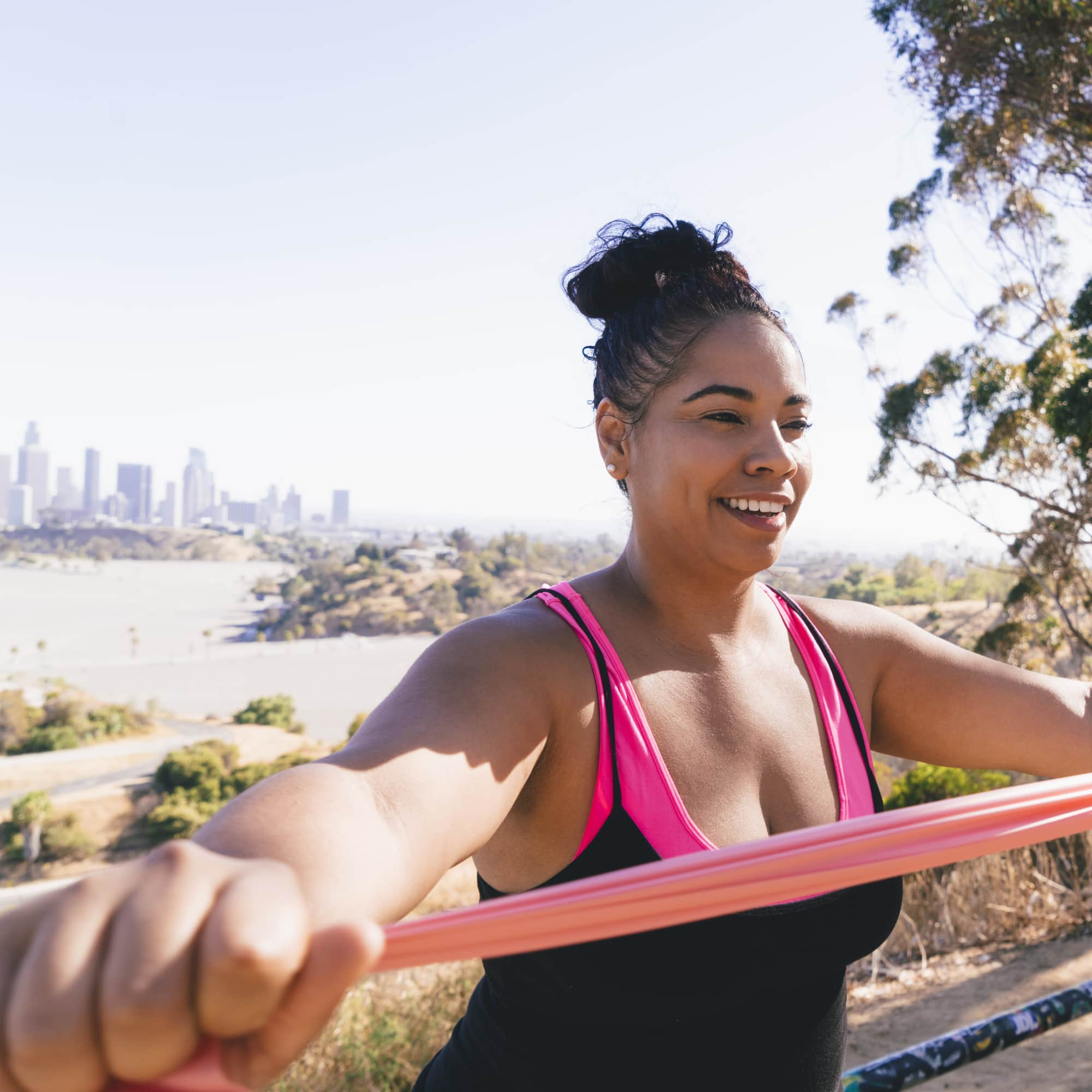
- POPSUGAR Australia
- Fitness
- 7 Expert-Approved Exercises That Will Give You Stronger Abs and Improve Your Posture
7 Expert-Approved Exercises That Will Give You Stronger Abs and Improve Your Posture

If your body feels out of whack and your neck, shoulders, and back are constantly tight and achy, you probably need to show your muscles some TLC and focus on your posture. When we spend long periods of time seated and on devices such as laptops and cellphones, we begin to adopt poor posture habits, and it’s not good for your body. One simple way to start improving your posture is to focus on strengthening your abs.
“The core is the foundation of our body,” Pamela Geisel, MS, CSCS, an exercise physiologist at the Hospital for Special Surgery’s Tisch Sports Performance Center, told POPSUGAR. When you think about the core, your abs are probably the first thing that come to mind, “but it’s actually so much more than that,” Geisel said.
Your core stabilizes your spine, which is one of the most important things it does, according to Geisel, and it also allows you to transfer power. “The core is responsible for every movement possible,” Geisel said. When you’re sitting at your desk, your core keeps you upright. When you walk and run, those movements originate from your core, she continued. “It’s so important that we pay attention to it, because it helps us move in optimal patterns that decrease the risk for injury and also allows us to excel at the activities that we love to do,” she said.
How a Strong Core Helps You Maintain Good Posture
Because people are sitting more, upper crossed syndrome, where the upper back is rounded and the head shifts forward, is becoming more common. People with upper crossed syndrome also tend to have elevated and protracted shoulder blades and poor thoracic spine (your lower spine) mobility. “So we put all these things together, it creates havoc.” It can lead to headaches, lower-back pain, and tightness and stiffness throughout your body, Geisel explained.
One way to prevent and fix upper crossed syndrome is to make sure the ergonomics of your work station are good, to take breaks often and move your body, and to do exercises at the end of the day to counteract any tightness and weakness that may be present, Geisel said. Specifically addressing tightness in the upper chest and traps with neck stretches and strengthening your deep neck flexors and scapular stabilizers (the back muscles) can help tremendously.
To help you improve your posture and core strength, Geisel shared a few exercises she recommends doing daily. They’re easy to perform, and you can do them with resistance bands or light weights, depending on your fitness level. If you want a stronger core and better posture, start adding the following exercises into your movement routine.
Related: This Is the Difference Between Building Muscle Strength and Endurance, According to Experts
Lying T-Spine Opener
Before getting into the exercises, Geisel recommends doing some form of a thoracic extension to counteract the flexed position most people stay in all day. This will help with extension of the spine and will also help you recruit the proper muscles as you progress to the core- and posture-enhancing exercises.
- Start lying in a straight line from head to toe on your left side. Keep your left leg fully extended as you bend at your right knee and place it on top of a foam roller parallel to your body. Your right knee should be perpendicular to your right hip, creating close to a 90-degree angle at the right hip. This is your starting position.
- Keeping your right knee “glued” to the foam roller, extend your left arm straight out with your palm facing up, and then stack your right arm on top of the left. Don’t let your right shoulder fall to the left, and be sure to maintain a straight line from your head to your toes.
- With control, begin to peel your right arm off of your left, keeping it fully extended, as you rotate toward your right from the upper back. Your knee should never move off the foam roller. The only movement should be coming from your upper back/spine. As you rotate open towards the right, be sure to rotate your head, following your right hand with your eyes.
- Moving with control, rotate open as far as you can without your knee coming off the foam roller. How far you go will be different for everyone, so it’s OK if you cannot go that far. Be sure to keep your right arm completely extended from your fingers to your shoulder. Don’t bend your wrist in an attempt to touch the ground. This movement is all about control; the ability to rotate further will come with repetition and consistency.
- Once you’ve reached your end point (the point where you cannot go any further without sacrificing your form), slowly begin to return to the starting position with control, keeping your arm extended and your right knee on the foam roller. Be sure to follow your hand with your eyes, rotating your head back to the left.
- Place your right arm back on top of the left arm. This counts as one rep.
TRX Mid-Row
Another row option is the TRX mid-row.
- Before getting started, make sure the TRX suspension trainer is secured to an anchor point (a fixed object that won’t move and can support you weight). The straps should be at mid-length.
- Grab the handles with each hand and walk your feet out, approximately two feet away from your body. Your arms should be extended in front of you and your body should be in a straight line. The further you walk your feet in front of you, the more challenging the exercise will become.
- Engage your core and make sure your spine is in a neutral position. Avoid rounding your shoulders and arching your lumbar spine.
- With your palms facing in and your ribs by your, side pull your elbows back. Keep your core engaged and tension on the straps as you return to the starting position with control. This counts as one rep.
Glute Bridge With a March
A progression of the traditional glute bridge is the glute bridge with a march. Only perform this exercise if you’ve mastered the glute bridge and can maintain proper form throughout the duration of the movement.
- Begin on your back with feet about 12 inches from your bum and hands by your sides with palms up.
- Press your heels into the ground and lift your pelvis up until your knees, pelvis, and shoulders form a straight line.
- Hold your bridge while you lift your right knee toward your chest until your hip is at 90 degrees.
- Return the heel to the floor and lift the left knee. Do not let your pelvis sag or your back overarch while lifting and lowering your knees. This completes one rep.
Single-Leg Bridge
The single-leg bridge is another advanced variation of the glute bridge. Only perform this exercise if you’ve mastered the glute bridge and can maintain proper form throughout the duration of the movement.
- Lie on your back, and place your hands on the floor for stability as you bend one leg and lift the other leg off the ground.
- Pressing your heel into the floor, lift your pelvis up, keeping your body in a stiff bridge position.
- Slowly lower your body to the floor and repeat for 30 seconds on each side.
Bird Dog
Geisel said bird dog is one of the most underrated exercises. “People look at it and they just think that it’s super simple and a waste of time, but a bird dog is actually quite challenging.”
- Get on all fours, with your knees under your hips and your hands under your shoulders. Remember to keep abs engaged and keep your back flat.
- Reach out with your right hand and extend your left leg out behind you.
- Round your back and head to connect your right elbow with your left leg under your body. This completes one rep.


